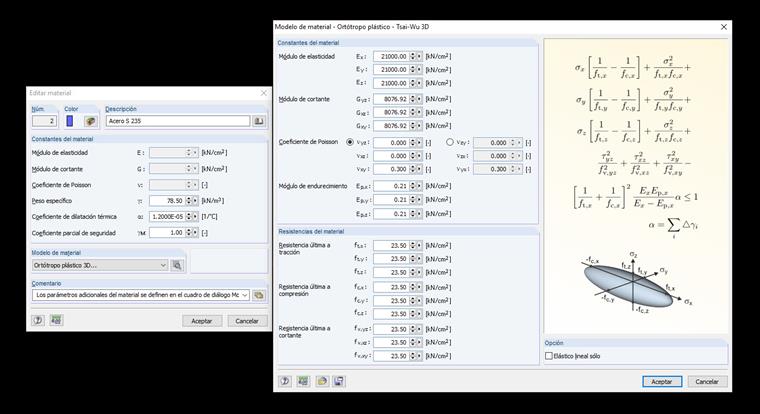El modelo de material de Tsai-Wu combina propiedades plásticas y ortótropas. Damit sind spezielle Modellierungen von Werkstoffen mit anisotroper Charakteristik wie Kunststoff oder Holz möglich. Si el material está plastificado, las tensiones permanecen constantes. Se produce una redistribución según las rigideces disponibles en las direcciones individuales. Der elastische Bereich entspricht dem Materialmodell "Orthotrop - 3D". Für den plastischen Bereich gilt folgende Fließbedingung nach Tsai-Wu:
mit:
Die Fließbedingung kann man sich als ellipsenförmige Fläche im sechsdimensionalen Spannungsraum vorstellen. Si se aplica una de las tres componentes como un valor constante, la superficie se puede proyectar en un espacio de tensiones tridimensional.
Ist der Wert für fy(σ) kleiner als 1, so liegen die Spannungen im elastischen Bereich. Der plastische Bereich ist erreicht, sobald <nobr>fy(σ) = 1</nobr>. Werte größer als 1 sind unzulässig. Das Modell verhält sich ideal-plastisch, d. h. es findet keine Versteifung statt.
